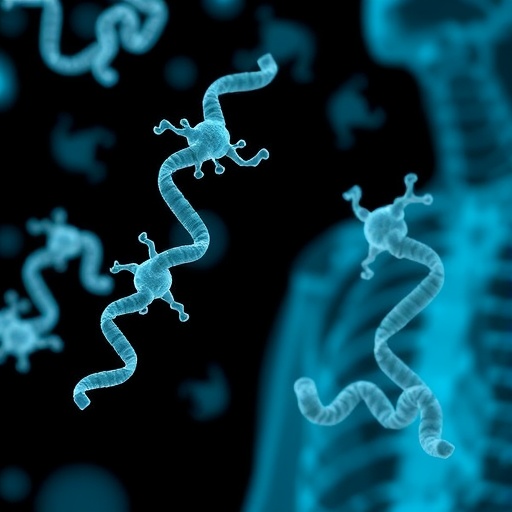
In the realm of medical science, the need for organ transplantation has never been more critical. As the global population ages and instances of organ failure rise, the challenge of meeting transplant demands becomes increasingly complex. Traditional methods often rely on allogeneic transplantation, where organs are sourced from donors of the same species. However, as highlighted by a recent study from Japan, xenotransplantation—the process of transplanting organs from one species to another—has emerged as a revolutionary alternative, carrying both immense promise and profound challenges.
The current landscape of organ transplantation in Japan presents a compelling dichotomy between the accepted practices of allogeneic kidney transplantation and the potentially groundbreaking method of xenotransplantation. This study, led by researchers Matsumura, Kakuta, and Maegawa-Higa, explores the critical differences between these two methodologies. With Japan experiencing a significant shortage of available human organs for transplantation, the exploration of xenotransplantation could offer a beacon of hope. The implications of this work serve not only to inform but also to stimulate much-needed discourse within the scientific community.
Both allogeneic and xenogeneic transplantation have their respective benefits and challenges rooted in biological, ethical, and technical domains. Traditionally, allogeneic transplantation, while the gold standard, is fraught with challenges such as organ availability and immune rejection—where the recipient’s body identifies the transplanted organ as foreign and attacks it. This complication necessitates the lifelong use of immunosuppressive drugs, each with potentially serious side effects. The intricate balance of managing rejection while maintaining immune function poses a significant obstacle for transplant recipients.
On the other hand, xenotransplantation presents an avenue that could potentially bypass some of these barriers. In principle, organs sourced from genetically modified animals—like pigs—could be designed to be less immunogenic, thus decreasing the likelihood of rejection. Initial animal studies have demonstrated variable success in the integration of animal organs into a human host without immediate rejection. However, the jump from preclinical trials to human applications remains a substantial leap and is laden with structural and ethical complexities.
As scientists delve deeper into genomic modifications to produce suitable organ donors, various strategies are being employed to make transplantation more viable. Genetic engineering techniques, particularly CRISPR-Cas9 technology, provide the tools necessary to alter pig genomes to make their organs more compatible with the human immune system. This sort of modification aims to minimize the risk of hyperacute rejection, a potent reaction against foreign tissues that occurs within minutes of transplantation. While these advancements are groundbreaking, they also raise significant ethical questions about the manipulation of animal genomes and their implications for biodiversity and animal welfare.
Additionally, the study emphasizes the importance of addressing the potential for zoonotic diseases—pathogens that can be transmitted from animals to humans—which poses a serious risk for xenotransplantation procedures. Prior occurrences of viral transmissions from animal organ donors underscore the need for rigorous monitoring and control protocols to ensure donor animals are free of such pathogens, especially when considering the delicate balance of immune systems in transplant recipients.
As researchers compile data and cases from early trials, Japan finds itself at the forefront of xenotransplantation research. The balance of public opinion, ethical considerations, and scientific progress remains delicate. The study advocates for an open forum for public interaction, allowing community engagement and awareness about the possibilities and realities of both xenotransplantation and allogeneic options. Transparency regarding risks, benefits, and ethical implications will be crucial as society navigates the complexities of this emerging field.
Moreover, the potential socio-economic impacts of implementing xenotransplantation can hardly be overstated. By alleviating the organ shortage crisis, xenotransplantation could impact healthcare systems, access to treatment, and ultimately, patient outcomes. Ensuring equitability in access to these technologically advanced treatments will be critical, as disparities in healthcare can lead to exacerbated inequalities.
Despite the optimistic potential of xenotransplantation, rigorous regulatory frameworks must be established to oversee research and clinical applications. International regulatory bodies will need to collaborate closely to ensure safety and efficacy standards are met on a global scale. Building comprehensive guidelines will foster trust in these practices and ensure that public health is prioritized.
In conclusion, as Japan navigates the dual paths of xenotransplantation and allogeneic transplantation, the landscape of kidney transplantation is undeniably shifting. Advancements in genetic technology and surgical expertise could transform xenotransplantation from a theoretical concept into a practical solution for organ shortages. Yet, the journey ahead is fraught with challenges that require collective foresight, ethical diligence, and unwavering commitment to scientific integrity. As this research progresses, a collaborative effort between scientists, ethicists, and public stakeholders will be essential to harness the full potential of xenotransplantation while safeguarding the values intrinsic to medical practice.
This exploration of xenotransplantation not only enriches the dialogue surrounding organ transplantation but also lays a vital foundation for future innovations that may one day redefine how we approach organ replacement therapies in a world in dire need of solutions.
Subject of Research: Xenotransplantation versus Allogeneic Kidney Transplantation
Article Title: Differences between xenotransplantation and allogeneic kidney transplantation: the current situation and future challenges in Japan.
Article References:
Matsumura, S., Kakuta, Y., Maegawa-Higa, Y. et al. Differences between xenotransplantation and allogeneic kidney transplantation: the current situation and future challenges in Japan.
J Artif Organs 28, 336–342 (2025). https://doi.org/10.1007/s10047-025-01506-x
Image Credits: AI Generated
DOI: https://doi.org/10.1007/s10047-025-01506-x
Keywords: Xenotransplantation, Allogeneic transplantation, Organ shortage, Genetic modification, Kidney transplantation, Ethical implications, Zoonotic diseases
Tags: allogeneic kidney transplantationbiological implications of xenotransplantationcomparative analysis of transplantation methodsethical considerations in transplantationfuture of organ transplantationJapan’s organ transplantation landscapemedical advancements in transplant scienceorgan shortage in Japanresearch on xenotransplantation viabilityrevolutionary organ transplant methodstechnical challenges in organ transplantationxenotransplantation challenges




